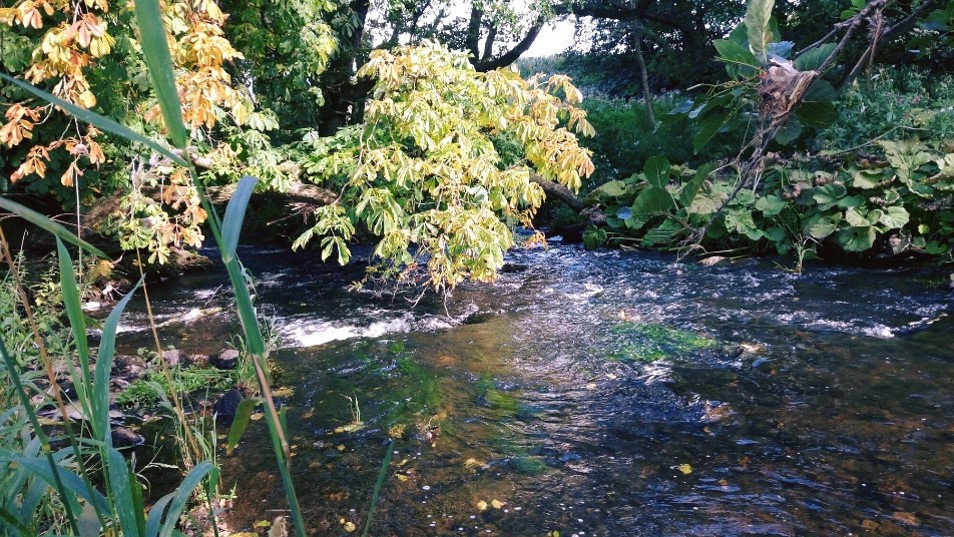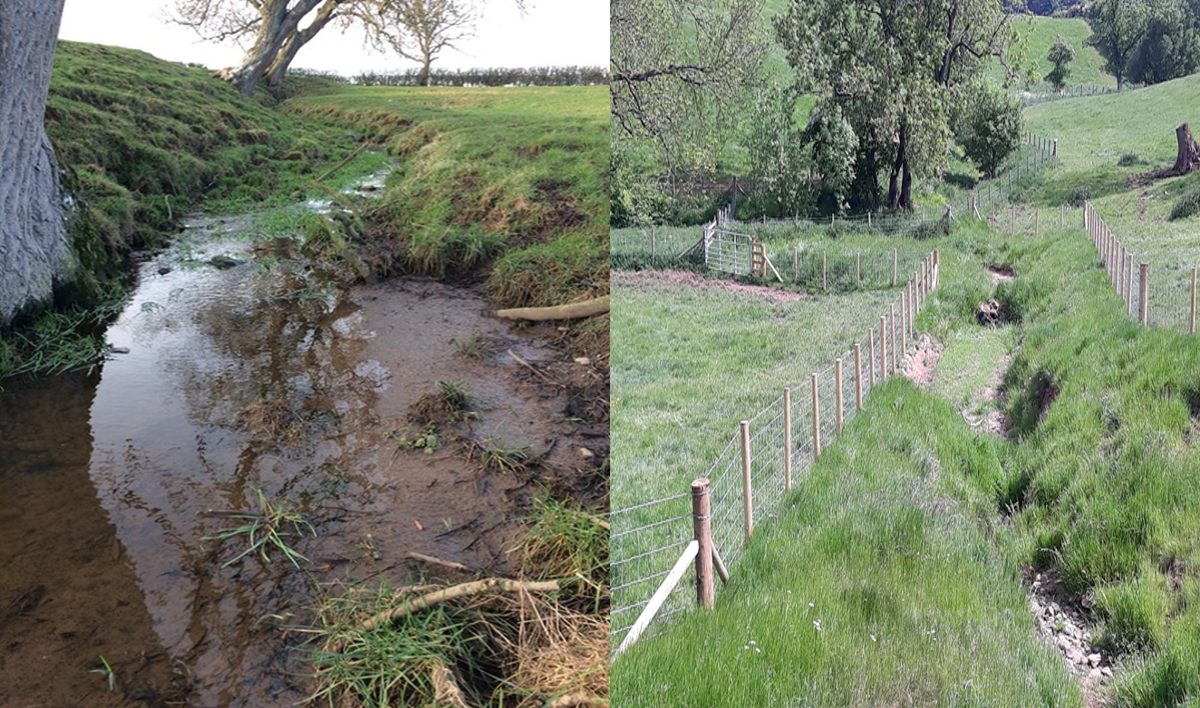Transforming the River Petteril
Working with partners to improve the water quality of the River Petteril
 We are committed to improving river health and our work across the River Petteril in Cumbria is by no means an exception. In fact, our ‘Better Rivers: Better North West’ programme is seeing us carry out a £230 million investment plan to improve 184km of the region’s rivers. Along with this wider commitment, what did we deliver to improve health of the River Petteril? What results have been achieved? And how have we been working with our partners to affect real change in Cumbria?
We are committed to improving river health and our work across the River Petteril in Cumbria is by no means an exception. In fact, our ‘Better Rivers: Better North West’ programme is seeing us carry out a £230 million investment plan to improve 184km of the region’s rivers. Along with this wider commitment, what did we deliver to improve health of the River Petteril? What results have been achieved? And how have we been working with our partners to affect real change in Cumbria?
It's time to take a deeper look at what innovative actions are spearheading change across the river’s ecosystem.
What’s the challenge?
The River Petteril is a tributary of the River Eden, located in Cumbria. This catchment is mainly agricultural land made up predominantly of livestock farms. We have a number of small wastewater treatment works (WwTW) across the catchment.
The area surrounding the River Petteril faces a number of environmental pressures. The local ecology is impacted by phosphorous pollution that is caused by everything from wastewater discharges, decentralised systems like septic tanks to agricultural and land management sources.
This resulted in a regulatory requirement under the Water Framework Directive (WFD) to reduce levels of phosphorus, with the aim of achieving ‘good’ ecological status in the catchment. In AMP6 and AMP7 four of our WwTWs in the Petteril had WFD regulatory drivers to address this issue.
However, the range of contributing sources makes the reduction of phosphorus pollution more difficult.
In 2016, we worked alongside the Environment Agency, the Eden Rivers Trust and local stakeholders to carry out a 17-week catchment wide monitoring survey. The survey revealed that in order to positively impact the amount of phosphorus in the River Petteril, we needed to not only look at our own processes but also work alongside partners and fellow contributors to transform the ecological status of the river through a catchment-wide approach.
A new way forward
Based on the evidence collected, we understood that we had to tackle the problem in a new way. Taking into account the dynamic nature of the catchment, how pollution into the River Petteril is driven by multiple sources and how it is exacerbated by storm and flooding events, a new collaborative approach was born.
We started to apply our Catchment Systems Thinking Strategy (CaST) in the Petteril, with the aim of working with others to address specific catchment needs in a more sustainable and holistic way.
What has that approach delivered?
-
The UK’s first Catchment Nutrient Balancing (CNB) trial at the Calthwaite Wastewater Treatment Works on the River Petteril
As a result, the UK’s first Catchment Nutrient Balancing (CNB) trial was initiated at Calthwaite wastewater treatment works (which discharges to the River Petteril) in 2019. This trial aimed to remove 150kg of phosphorus load through integrated catchment and treatment works solutions – in turn creating a 9% reduction in phosphorus in the catchment area against initial baseline.
We implemented innovative polonite reactive filter media at our Calthwaite treatment work as an alternative to traditional phosphorus treatment methods. This was the first time this fit-for-purpose technology to treat phosphorus in small WwTWs had been implemented at full scale. We then looked to wider catchment measures.
The CNB approach provided an opportunity to reach targets through an offsetting approach by helping another sector such as agriculture to deliver beyond regulatory obligations. The trial saw us work with other sectors such as agriculture, businesses, and environmental NGOs to deploy wider catchment measures such as hedges, buffer strips of vegetation and sediment ponds - delivering greater value for customers, communities, and the environment.
The three-year trial proved to be a success. In 2022, it achieved a 63% reduction in the phosphorus level in the catchment, according to measured data. Phosphorus treatment (polonite reactive filter media) at Calthwaite Wastewater Treatment Works had a significant impact on overall phosphorus load reduction. The catchment impact, however, was six times greater than the initial target when wider catchment measures were also established.
While it is unlikely all the load reduction was delivered exclusively from the interventions funded by us, it does evidence the enhanced benefit that can be achieved with an integrated approach that engages all sources of pollution within the catchment - rather than focusing on a one-size-fits-all solution.
Primarily, the act of engaging with and supporting agriculture is likely to yield improved agricultural performance and better compliance which provides increased river quality benefit.
In addition to phosphorus reduction, these catchment interventions have also delivered significant additional ecological benefits though the reduction of nitrate, sediments, nitrous oxide, and bacterial load. They have also delivered wider biodiversity benefit and overall soil quality enhancement.
An achievement which saw it awarded the Water Industry Forum’s Environmental Innovation Award at their 10-year anniversary in 2022 in Leeds, acknowledging the environmental benefits and cost savings delivered by the project.
-
Innovative partnership-based working
The CNB trial enabled us to engage with a wide range of partners in the catchment. Working with Eden Rivers Trust, Carlisle City Council; Cumbria County Council; Lancaster University; Natural England’s Catchment Sensitive Farming; The National Farmers Union, the Environment Agency, 3Keel, Nestle and First Milk Ltd, we have made joint decisions through co-creation and co-delivery of interventions.
This has included:
- Establishment of the Petteril Steering Group made up of multi-sectorial collaboration, to oversee the pilot and establish the primary needs for future investment in the catchment.
- A long-term vision for the Petteril, with the vision of a resilient catchment where the environment and communities can thrive.
- Carrying out a survey in the Petteril asking those in the community exactly what they wanted to see in their catchment.
- In collaboration with Nestle, piloting nutrient trading and catchment markets through demand-led models (Landscape Enterprise Networks) to deliver joined-up investment in the catchment.
- Evidence-driven monitoring and investigations to understand the key nutrient pollution issues and sources in the catchment.
- Gathering annual data to give better insights on how the actions delivered have resulted in visible improvements.
- £13.5 million has been invested by United Utilities to achieve greater environmental outcomes for the area.

At Calthwaite Beck, we worked with farmers to install fencing and a silt pond to reduce bankside erosion and slow the flow of water during heavy rainfall.
What is the roadmap ahead?
The CNB trial is currently being expanded across three further wastewater treatment works in the Petteril catchment (Greystoke, Motherby and Southwaite), targeting phosphorus load reductions of a total of 566kg/year by September 2024, where 98kg of this reduction is achieved through catchment interventions. We are aiming to deliver these by September 2023 across nine farms in the catchment.
We are currently looking to expand the CNB approach across the wider Eden catchment (of which the River Petteril is a tributary), through the Green Recovery programme of work and it is supported by Natural Environment Investment Readiness Fund (NEIRF), which expands the work we have done with Landscape Enterprise Networks (LENs). We are looking to deliver 1000kg a year phosphorus reduction across the Eden catchment area by spring 2025 which will support the delivery of AMP8 investments by realising catchment savings earlier.
Ultimately, through creating strong partnerships and bringing forth innovative ways of thinking, we are committed to working alongside the farming community and its stakeholders to transform the health of the River Petteril – creating a healthier river for all to enjoy.
Catchment Nutrient Balancing Approach – an example for the water Industry
Building on our learning from delivering the UK first Catchment Nutrient Balancing (CNB) Approach trial at Calthwaite wastewater treatment works, and our use of this approach in the wider Petteril catchment, we identified significant complexities in how to put this into action. As this is novel to the water industry, we have developed this knowledge into a comprehensive document so that we can share our experience with others.
Our CNB document provides information that will enable other water companies to make appropriate choices both now and in the future when they utilise a CNB approach and through this, we hope to increase the uptake of this method, benefiting both, customers and the environment. This document has been reviewed, acknowledged and approved by The Environment Agency.